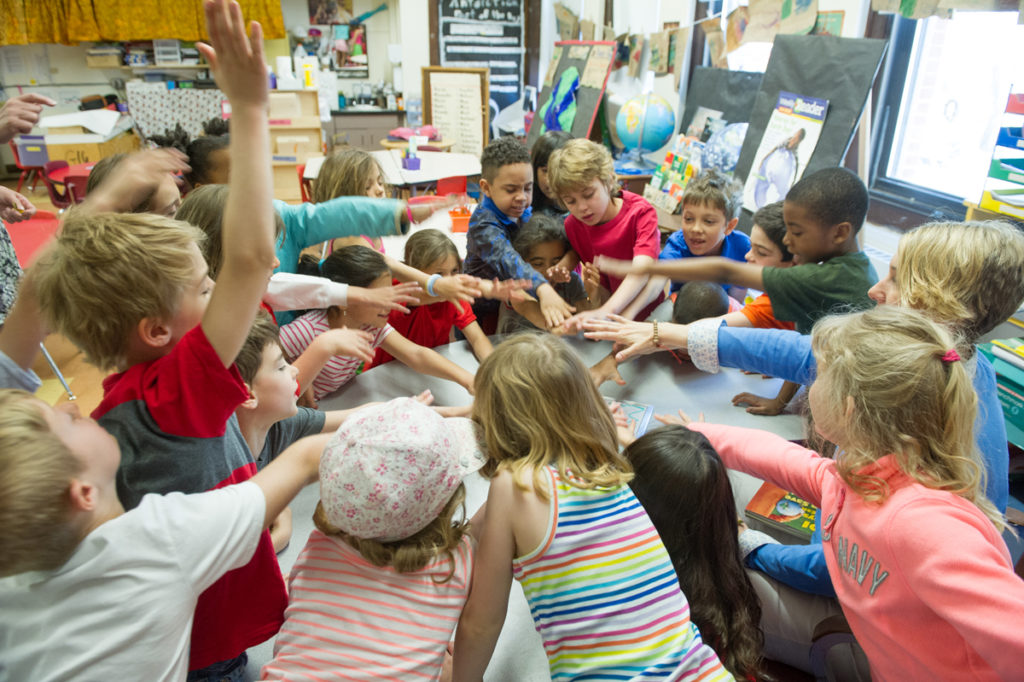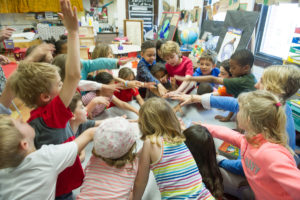
 Question: What’s something you do with students to end the year on a positive note?
Question: What’s something you do with students to end the year on a positive note?A: A few years ago I decided to make sure my class would have time for saying goodbye on the last day of school. To help them prepare, the night before I gave them “thinking homework,” asking them to reflect on what they remembered about the school year and to be ready to share their memories with the class.
Near the end of the next day, I shut the door and posted a “Do Not Disturb” sign on it so we wouldn’t be interrupted. People knew what we were doing must be important—it was the first time during the whole year that I’d closed the classroom door!
For about thirty minutes, we shared our “I remembers,” and I jotted down what the children said, everything from “learning to read” to “singing on stage at the holiday concert.” We hugged, laughed, and cried. Before the children left for the day I gave them copies of everyone’s “I remembers” to take home. I have done this every year since. It has become a cherished way to end the year on a positive note.
Arlene Flye, preK and kindergarten teacher, Cave Hill Elementary School in Eastbrook, ME
A: At the end of last year, we launched a new schoolwide summer reading program that was received quite enthusiastically by students and their families. At an all-school gathering close to the end of school, I talked about how important it was for students to read and write over the summer, and we gave each child a set of materials tailored by grade level, including a notebook, weekly writing prompts, and advice about how much summer reading to do.
We also sent letters home explaining that we hoped every family would support their children in summer reading and telling why this was important. We asked families to read The Great Kapok Tree together over the summer. The book has a diversity theme and is available in both English and Spanish. We provided a copy of the book to each family through the Reading Is Fundamental program.
Finally, to top it off I made a pledge to the students that if they did their summer reading and writing, I would shave my head when we came back to school. In September at an all-school assembly, I kept my promise! The entire program was very motivational and added something positive to our school culture.
Dick Spindler-Virgin, principal, K–6 Regional Multicultural Magnet School, New London, CT
A: About six weeks before the end of school, the class would start working on their end-of-the-year self-assessments. This was a multi-step process that culminated in each child’s producing a packet of writing and supporting materials that highlighted important things he or she had learned, was proud of, and wanted to achieve in the coming year.
We began by reflecting as a group, taking the 160 or so News and Announcements charts I had made for our daily Morning Meetings and spreading them out on the basketball court. The children walked around with their clipboards, examining the charts and remembering the year. They’d say things like “Hey, remember when we learned about sharks?” and “That was cool when we went to the nature center!” Then they’d make a note if they wanted to include that experience in their individual self-assessment.
Laid out this way, the charts told the story of our year and helped the children appreciate how much they’d accomplished, together and individually.
Andy Dousis taught 3rd and 4th graders at Flanders Elementary School in East Lyme, CT, for ten years.